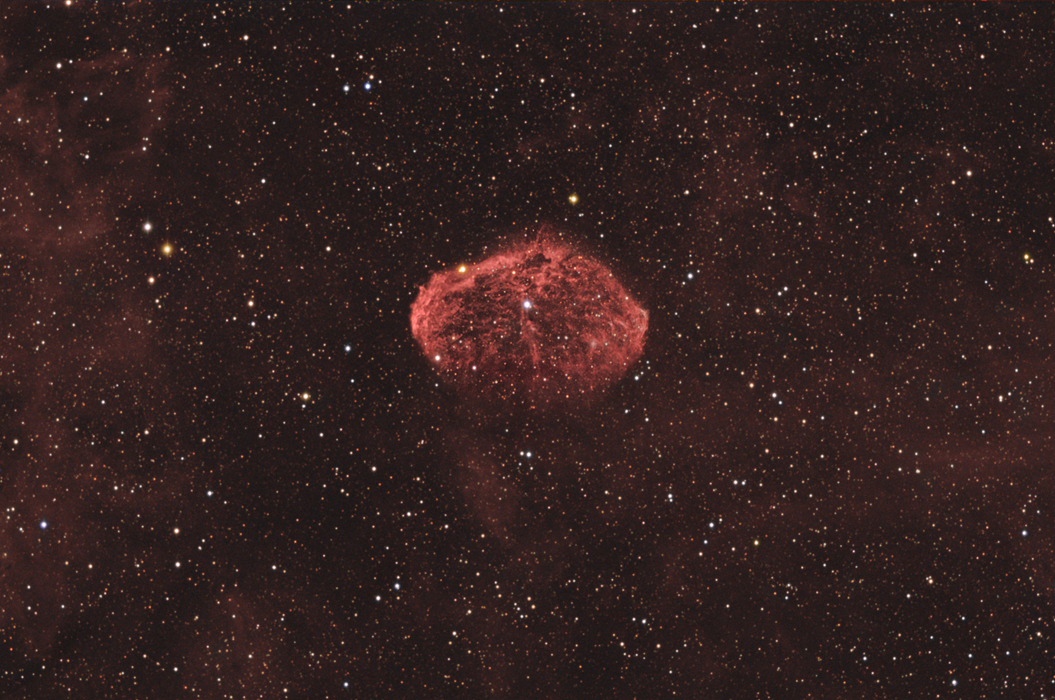Time Travel Research Center © 2005 Cetin BAL - GSM:+90 05366063183 - Turkey / Denizli
The Crescent Nebula (NGC 6888)
Characteristics:
Magnitude: 10.0
Size: about 20'
Distance: 4,700 light years
RA: 20h 12m 48s
Dec: 38 degrees 19' 00"
Description:
The Crescent Nebula is not a typical supernova remnant like the Veil. It is
probably a result of the slow release of large amounts of gas from the dying
central star seen in the above photograph, known as Wolf-Rayet 136, which
has not yet gone supernova. The stellar winds resulting from the release of
this star's outer envelope compress and excite surrounding hydrogen gas,
resulting in Ha emission and the characteristic layered texture to NGC
6888. More information about this interesting region of space can be found
here. This represents the first light image for my new camera, the MaxCam
CM10 by Finger Lakes Instruments.
Photographic Details:
Date: June 4, 2005
Scope: Takahashi FS-102 at f6 with TOA-130 focal reducer, on the G11
Losmandy Mount.
Autoguider: SBIG STV with e-finder.
Camera: CM10
Filters: Astrodon 6nm bandpass Ha filter. R, G, B Astronomik filters.
Exposures: 15 x 8' each Ha; 4 x 4' each R,
G, B. Total exposure duration 168 minutes.
Conditions: Temperature 80 degrees F; below
average transparency; humid; poor seeing; slight breeze. Imaging performed
at -25 degrees C throughout (delta approximately 50 degrees C).
Post-processing: Calibrated subs were debloomed with Ron Wodaski's
Debloomer software, and then aligned in Registar. Sigma combined using RC
Sigma Reject MaximDL, followed by DDP in ImagesPlus (IP). Subsequent levels
and curves adjustments in Photoshop CS (16 bit format).
